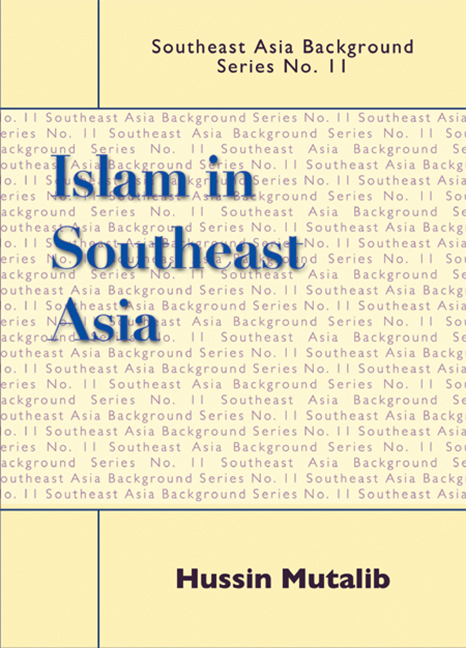Book contents
5 - Singapore
Published online by Cambridge University Press: 21 October 2015
Summary
Singapore 2000 Population Census indicates that there are about 15 per cent Muslims in the Republic, 14 per cent of which are ethnic Malays. In numbers, this comprises about 450,000 in a population of 4 million people. The remaining 1 per cent comes from ethnic groups such as Arabs and Indians. The Republic's ethnic composition has been, by and large, consistent for many decades — with the majority Chinese taking up 77 per cent and the other minority community, the Indians, 7 per cent. The male-female ratio of the Muslim population is about even, just like the Chinese. Singapore Muslims consists of quite a number of dialect sub-groups — such as Boyanese, Bugis, Javanese, and Malays with Indian and Arab descent, as well as Chinese converts — but there is a high level of unity since these groups generally regard themselves as belonging to the Muslim community.
There has been a steady increase of Chinese converts to Islam, but their numbers remain small. The majority of ethnic Malays are Sunni Muslims. They are also “born Muslims” since they profess the religion of their ancestors who were generally Muslim when they first arrived at Singapore's shores in the early centuries. In terms of geographical settlement, Malays (Muslims) are spread evenly throughout Singapore. This is the result of the Government policy of imposing ethnic quotas in public residential estates, where about 90 per cent of Singaporeans live. The Republic's small size and its rapid industrialization growth, has made the entire Singapore island (measuring 699.4 sq. km., including 63 offshore islands) a modern “city-state”, with all ethnic groups residing in mixed neighbourhoods. Gone are the days when ethnic groups were located in residential ethnic enclaves such as Chinatown (for Chinese), Geylang Serai (Malays) and Serangoon (Indians) and were isolated from each other. Hence, Muslims today live side-by-side with other Singaporeans of different ethnic and religious backgrounds in a modern, cosmopolitan environment, an environment that invariably also shapes the role of Islam in the Republic.
- Type
- Chapter
- Information
- Islam in Southeast Asia , pp. 47 - 58Publisher: ISEAS–Yusof Ishak InstitutePrint publication year: 2008



